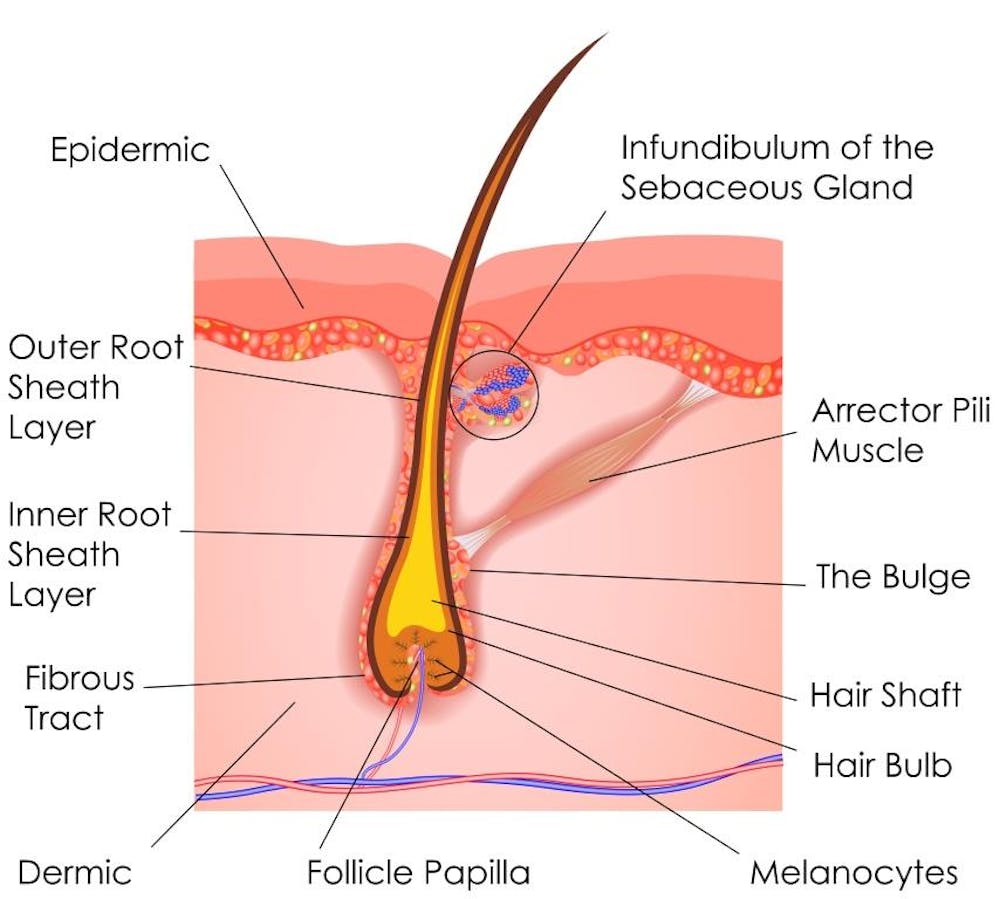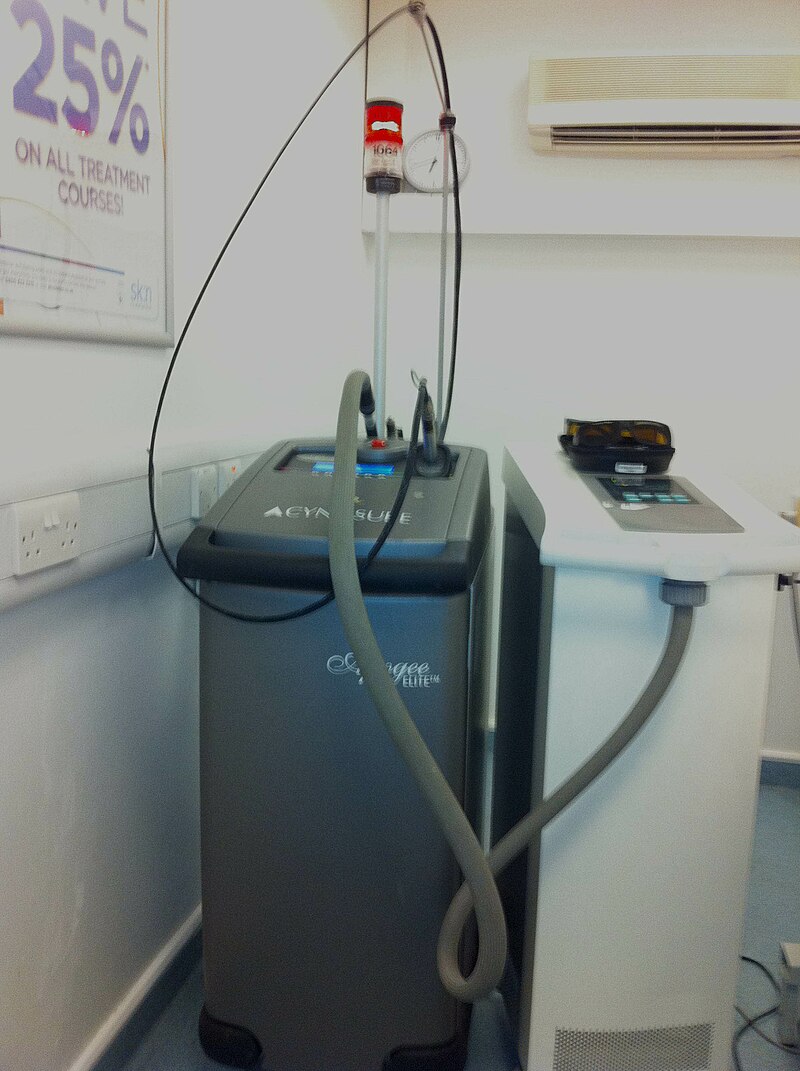Ditch the Razor Forever: Ultimate Guide to Laser Hair Removal

Hello! Have you ever been frustrated by the constant need to shave or wax unwanted hair off your body? If so, you may have considered cosmetic laser hair removal a more lasting solution. In this blog post, we will discuss the basics of cosmetic laser hair removal and the pros and cons of this popular beauty treatment.
Cosmetic Laser Hair Removal Definition and Overview
Cosmetic laser hair removal is a medical procedure that uses concentrated beams of light to target the hair follicles on various body parts, such as the legs, underarms, bikini area, and face. The laser emits gentle pulses of energy that penetrate the skin and are absorbed by the melanin in the hair follicles. This causes the follicles to heat up and become damaged, inhibiting hair growth.
The Advantages and Disadvantages of Laser Hair Removal
As with any medical procedure, there are both advantages and disadvantages to cosmetic laser hair removal:
Advantages:
-
Long-lasting results: Unlike shaving or waxing, which only provide temporary hair removal, laser hair removal can offer permanent or long-lasting hair reduction.
-
Precision: The laser can target specific hairs without damaging the surrounding skin.
-
Speed: Laser hair removal can cover a large area of skin quickly, especially compared to waxing or tweezing.
-
Reduced skin irritation: Laser hair removal can be a gentler option for those with sensitive skin prone to ingrown hairs or razor burns.
Disadvantages:
-
Cost: Laser hair removal can be more expensive than other temporary hair removal methods like shaving or waxing.
-
Multiple sessions: Most people require several laser hair removal sessions to achieve desired results, which can take months and may require additional touch-up treatments.
-
Pain or discomfort: Some people experience mild discomfort or tingling during laser hair removal.
-
Limited effectiveness on certain hair colours: Laser hair removal may be less effective on lighter or grey hairs with less melanin to attract the laser's energy.
Cosmetic laser hair removal can be a great option for those looking for longer-lasting hair reduction or removal. However, it's important to weigh the pros and cons and consult a licensed professional to decide if it's the right choice.

Types of Lasers for Hair Removal
Which laser type best suits your skin type and hair colour? This section'll discuss two of the most commonly used lasers in cosmetic laser hair removal: Diode Lasers and Nd: YAG Lasers.
Diode Lasers for Hair Removal
Considered the "gold standard" of laser hair removal, Diode Lasers can be used on all skin types and offer high efficiency and precision. The Diode laser emits a single wavelength of light that targets the pigment in the hair follicle and destroys it, leading to permanent hair reduction. This type of laser is suitable for those with light to medium skin tone and dark hair.
Nd: YAG Lasers for Hair Removal
Best suited for those with darker skin tones, the Nd: YAG laser works by emitting a longer wavelength of light, which penetrates the skin deeper and targets the hair follicle without damaging the surrounding skin. This type of laser is ideal for those with darker hair and skin tones, as it can provide effective hair removal while minimizing the risk of pigmentation changes or burns.
When deciding which type of laser to use for hair removal, it's important to consult with a licensed professional and consider factors such as your skin type, hair colour, and desired results. So, whether you opt for a Diode Laser or Nd: YAG Laser, you can enjoy the benefits of smoother, longer-lasting hair-free skin!

How Laser Hair Removal Works
The Science behind Laser Hair Removal
Laser hair removal targets the pigment in the hair follicle with a high-intensity light beam, which is absorbed by the melanin in the hair. The light energy is converted to heat, causing damage to the hair follicle and preventing future hair growth. This is known as selective photothermolysis.
The Laser Hair Removal Process
Before your laser hair removal treatment, your skin will be cleaned and prepped to ensure optimal results. A cooling gel may be applied to protect the skin from the laser's heat. A handheld laser device is used to target the hair follicles in the treatment area during the treatment. You may feel a slight discomfort or warmth, but most people find the procedure tolerable.
The length of your treatment will depend on the size of the treatment area and the density of your hair. After your treatment, you may experience redness or mild swelling, but this should subside within a few hours. You'll typically need multiple treatments spaced a few weeks apart to achieve optimal results.
With its high efficiency and precision, laser hair removal has become one of the most popular cosmetic procedures for achieving long-lasting, hair-free skin. So, if you're ready to say goodbye to unwanted hair, talk to a licensed professional to see if laser hair removal is right for you!

Preparing for Laser Hair Removal
If you've decided to try laser hair removal, it's important to know what to expect so you can make the most of your treatment. Here are some tips to help you prepare:
What to do Before Your Laser Hair Removal Appointment
Avoid waxing, plucking, or threading the treatment area a few days before your appointment, as this removes the hair follicles that the laser targets. Additionally, it's best to avoid sun exposure, tanning beds, and self-tanner for at least two weeks before your appointment, as this can increase your risk of side effects like skin irritation.
You should also inform your laser hair removal technician if you have any medical conditions or are taking any medications that could affect your treatment. Certain medications like antibiotics, blood thinners, and Accutane can make your skin more sensitive to the laser, so it's important to inform your technician.
Tips for Preparing for Your Laser Hair Removal Treatment
On the day of your appointment, it's important to wear loose, comfortable clothing to avoid irritation or chafing in the treatment area. You should also avoid wearing any jewellery, makeup, or perfumes to ensure the laser can be applied directly to the skin.
It's also a good idea to avoid caffeine and other stimulants before your appointment, as these can increase your pain sensitivity. Instead, try to relax with deep breathing exercises or meditation to help you stay calm and comfortable during your treatment.
Following these tips can help ensure a successful and comfortable laser hair removal experience. So, get ready to say goodbye to unwanted hair and hello to smooth, hair-free skin!

The Laser Hair Removal Procedure
What to Expect During a Laser Hair Removal Session
Your laser hair removal technician will begin by cleaning the treatment area and applying a numbing cream to minimize discomfort. They will then use a handheld laser to target the hair follicles in the treatment area. The laser emits a beam of light absorbed by the pigment in the hair follicle, damaging it and preventing future hair growth.
The duration of your treatment session will depend on the size of the treatment area and the density and thickness of your hair. Most sessions take only 15-60 minutes.
Possible Risks and Side Effects
Laser hair removal is generally a safe and effective procedure, but there are some potential side effects to be aware of, including:
- Skin irritation
- Redness or swelling
- Burns or blisters
- Pigment changes in the skin
These side effects are typically mild and temporary, but it's important to let your technician know if you experience discomfort during or after your treatment.
By understanding what to expect during a laser hair removal session and being aware of the possible risks and side effects, you can decide whether this treatment is right for you.

Aftercare for Laser Hair Removal
Post-Treatment Care for Best Results
To achieve the best results, practising good post-treatment care is crucial. Here are some tips to follow post-laser hair removal:
- Avoid sun exposure for at least 24 hours after your treatment.
- Do not touch the treated area with unclean hands.
- Wear loose-fitting clothes to avoid irritation and allow your skin to breathe.
- Use gentle, non-scented skincare products in the treated area.
How to Manage and Reduce Any Discomfort
It's common to experience discomfort after laser hair removal, but there are ways to manage them. Here are some tips:
- Apply a cold compress or aloe vera gel to soothe the skin.
- Avoid hot showers or activities that cause sweating.
- Do not itch or scratch the treated area.
- Avoid using skincare products containing acids or exfoliants in the treated area.
By following these guidelines, you can ensure the best possible results after your procedure. If you still have any questions or concerns, don't hesitate to ask your laser hair removal professional.

Laser Hair Removal for Different Skin Types
If you're considering laser hair removal, you may wonder if it's safe and effective for your skin type. The good news is that laser hair removal can work for a variety of skin tones, but the approach may differ based on your skin's level of pigmentation. Here's what you need to know for laser hair removal for different skin types.
Laser Hair Removal for Light Skin
Laser hair removal is generally safe and effective if you have light skin. The laser targets the pigment in the hair follicle, so the contrast between the hair and skin colour is critical. The greater the contrast, the more effective the treatment will be. Technicians typically use a shorter wavelength laser for lighter skin to avoid damaging the surrounding skin.
Laser Hair Removal for Dark Skin
For individuals with dark skin, laser hair removal can still be an option, but there is more risk involved. The pigment in the skin can absorb the laser energy instead of the hair follicle, leading to skin damage and burns. Technicians must use a longer wavelength and cooler settings to minimize the risk of damage.
It's important to note that results may vary based on the individual and the type of laser used. Always consult a professional to determine the best approach for your skin type and hair removal goals.
Remember, following proper aftercare instructions can help reduce potential side effects and ensure optimal results regardless of skin type. With the right precautions and care, laser hair removal can be a safe and effective solution for unwanted hair.

The Benefits of Laser Hair Removal
Long-Term Results of Laser Hair Removal
Laser hair removal targets the hair follicle at the root, providing long-term hair reduction. While some regrowth may occur over time, treatments can be scheduled to maintain results. Compared to other hair removal methods, such as shaving or waxing, where hair regrowth can occur within a few days, laser hair removal can provide results that last months or even permanently.
Cost-Effectiveness of Laser Hair Removal
Although laser hair removal may seem pricier than other hair removal methods, it can ultimately be cost-effective in the long run. With the long-term reduction of hair growth, you can save money on products and services used for hair removal in the long run. The time saved from not having to shave or wax frequently can be priceless.
Overall, laser hair removal can be a great investment for those looking for long-term hair reduction and wanting to save time and money. Consult a professional to determine if laser hair removal is the right option for your hair removal goals and budget.

